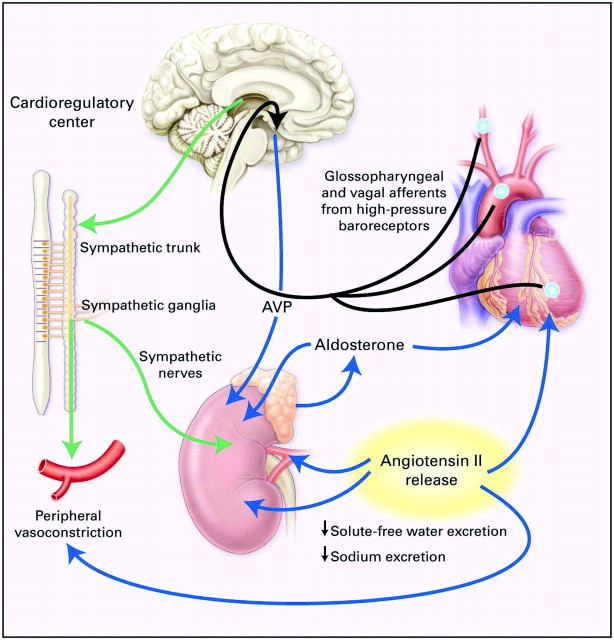Figure 1.
Unloading of high-pressure baroceptors (blue circles) in the left ventricle, carotid sinus, and aortic arch generates afferent signals (black) that stimulate cardioregulatory centers in the brain, resulting in the activation of efferent pathways in the sympathetic nervous system (green). The sympathetic nervous system seems to be the primary integrator of the neurohumoral vasoconstrictor response to arterial underfilling. Activation of renal sympathetic nerves stimulates the release of renin and angiotensin II, thereby activating the renin-angiotensin-aldosterone system (RAAS). Concomitantly, sympathetic stimulation of the supraoptic and paraventricular nuclei in the hypothalamus results in the nonosmotic release of arginine vasopressin (AVP). Sympathetic activation also causes peripheral and renal vasoconstriction, as does angiotensin II. Angiotensin II constricts blood vessels and stimulates the release of aldosterone from the adrenal gland, and it also increases tubular sodium reabsorption and causes remodeling of cardiac myocytes. Aldosterone may also have direct cardiac effects on fibrosis, in addition to increasing the reabsorption of sodium and the secretion of potassium and hydrogen ions in the collecting duct. The blue lines designate circulating hormones. Reprinted from reference 2 (Schrier RW, Abraham WT: Hormones and hemodynamics in heart failure. N Engl J Med 341: 577–585, 1999), with permission. Copyright © 1999 Massachusetts Medical Society. All rights reserved.

